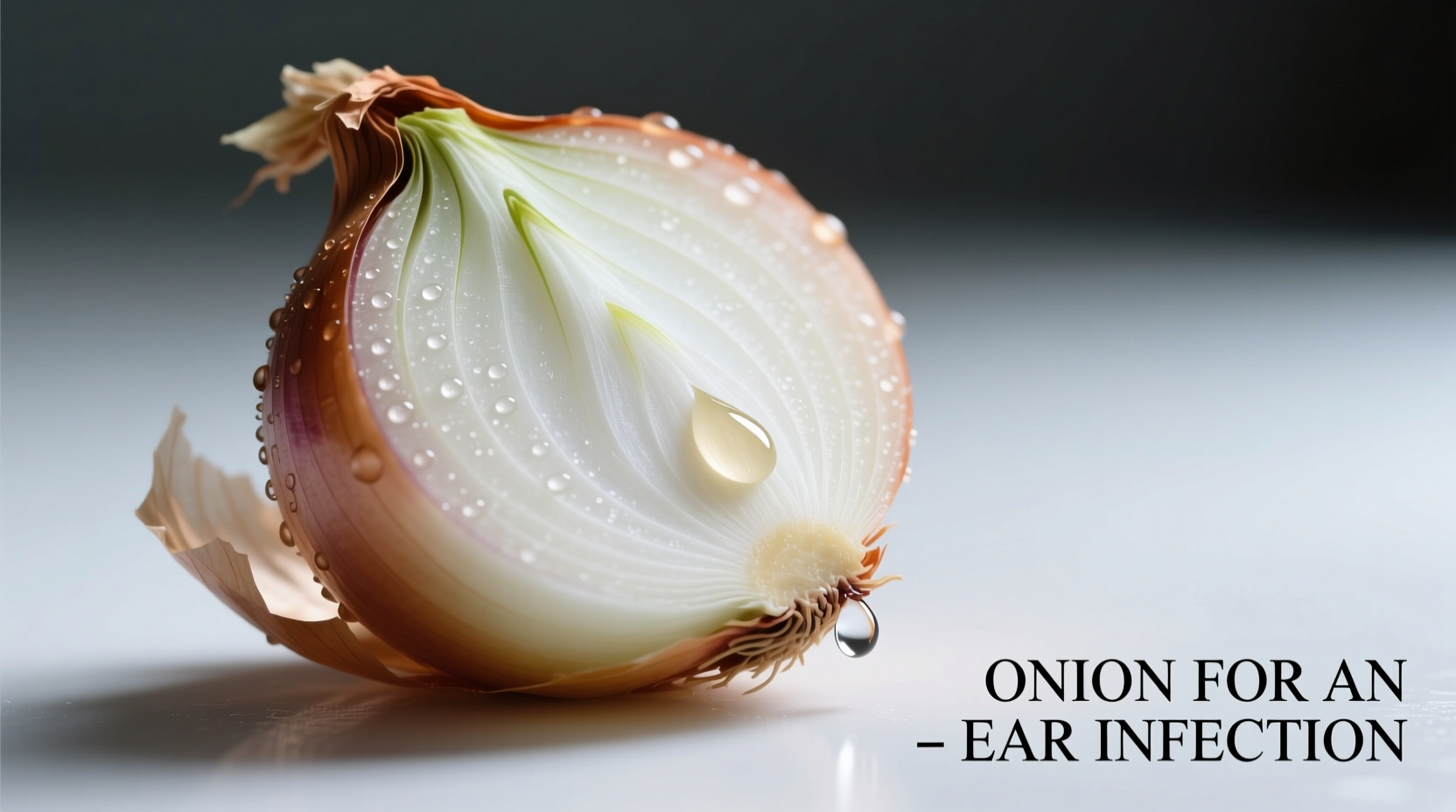Why Onion Isn't a Safe Solution for Ear Infections
Despite persistent folklore suggesting onion can treat ear infections, medical experts strongly advise against this practice. The American Academy of Otolaryngology-Head and Neck Surgery explicitly warns that inserting any foreign substance into the ear canal—including onion—can cause complications that worsen the condition. Ear infections require proper medical diagnosis and treatment, not unverified home remedies that risk further damage.
| Common Onion Remedy Claim | Medical Reality | Source |
|---|---|---|
| Onion's antimicrobial properties treat infection | Lab studies show antimicrobial effects in controlled settings, but not in ear canal environments | National Institutes of Health research on Allium compounds |
| Onion poultices draw out infection | No scientific evidence supports "drawing out" infection; may introduce bacteria | American Academy of Pediatrics clinical guidelines |
| Warm onion juice relieves pain | May provide temporary warmth but risks chemical irritation and infection spread | Journal of the American Medical Association Otolaryngology review |
The Dangers of Onion Ear Treatments
When people search for "onion for an ear infection," they're often seeking immediate relief from painful symptoms. However, the risks of using onion far outweigh any potential temporary comfort. The ear canal's delicate skin and complex anatomy make it particularly vulnerable to damage from inappropriate treatments.
Three critical risks of onion ear treatments:
- Infection introduction: Raw onion carries bacteria that can enter the ear canal, potentially worsening the infection
- Tissue damage: Onion's acidic compounds can irritate already inflamed ear tissue, causing chemical burns
- Obstruction: Onion particles can become lodged in the ear canal, requiring medical removal

When Home Remedies Cross the Line
Understanding the boundaries between safe symptom management and dangerous self-treatment is crucial. While some home care can provide temporary comfort, certain actions cross into medical territory that requires professional intervention.
Appropriate Home Care for Ear Discomfort
- Over-the-counter pain relievers (ibuprofen or acetaminophen)
- Warm compress applied to the outer ear
- Rest and hydration to support immune response
Dangerous Practices to Avoid
- Inserting any objects or liquids into the ear canal
- Using unverified "natural" remedies without medical consultation
- Delaying professional care beyond 48 hours of symptom onset
What Medical Professionals Actually Recommend
According to the Centers for Disease Control and Prevention, acute ear infections (otitis media) require proper diagnosis to determine if they're bacterial or viral. Bacterial infections typically need prescription antibiotics, while viral infections require symptom management under medical supervision.
The American Academy of Pediatrics emphasizes that "watchful waiting" is sometimes appropriate for mild cases in older children, but this is a medical decision—not a recommendation for home remedies. Your healthcare provider can determine:
- Whether your infection requires antibiotics
- If your eardrum is intact (critical for treatment options)
- When follow-up care is necessary
Safe Alternatives for Ear Pain Relief
While waiting for medical care or during treatment, these evidence-based approaches can safely reduce discomfort:
- Proper pain management: Age-appropriate doses of ibuprofen or acetaminophen
- External warmth: A warm (not hot) compress held against the outer ear
- Elevated sleeping position: Reduces pressure in the middle ear
- Medical-grade ear drops: Only those prescribed by your healthcare provider
Remember that pain relief doesn't equal treatment. Even if discomfort decreases, the underlying infection may still require medical intervention.
When to Seek Immediate Medical Attention
Certain symptoms indicate potentially serious complications requiring urgent care:
- Severe pain that suddenly stops (possible eardrum rupture)
- Fever above 102.2°F (39°C)
- Dizziness or balance problems
- Facial weakness or drooping
- Drainage of pus or bloody fluid from the ear
For children under 6 months with any ear infection symptoms, immediate medical evaluation is essential. The CDC reports that untreated ear infections can lead to serious complications including hearing loss, mastoiditis, and in rare cases, meningitis.











 浙公网安备
33010002000092号
浙公网安备
33010002000092号 浙B2-20120091-4
浙B2-20120091-4